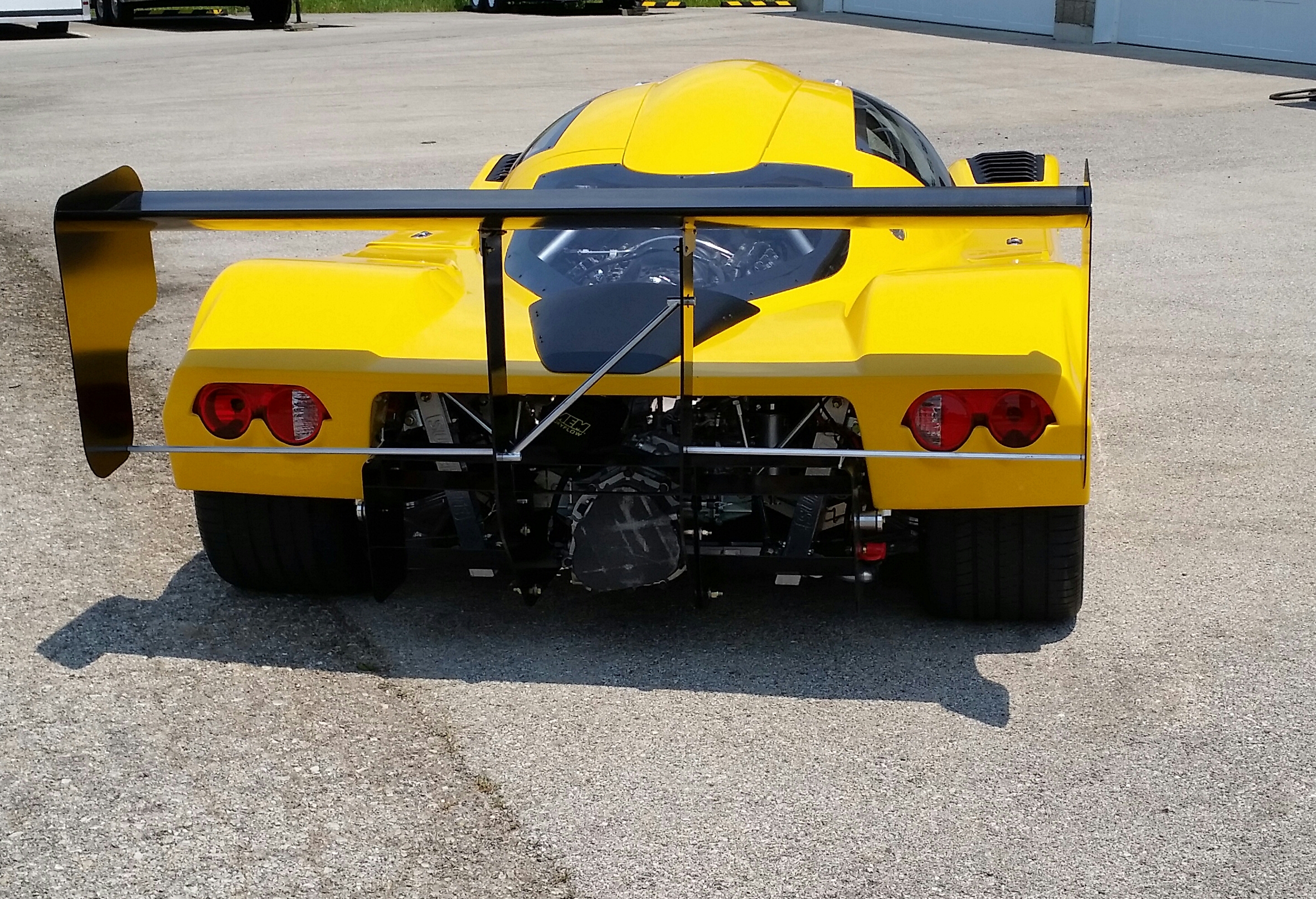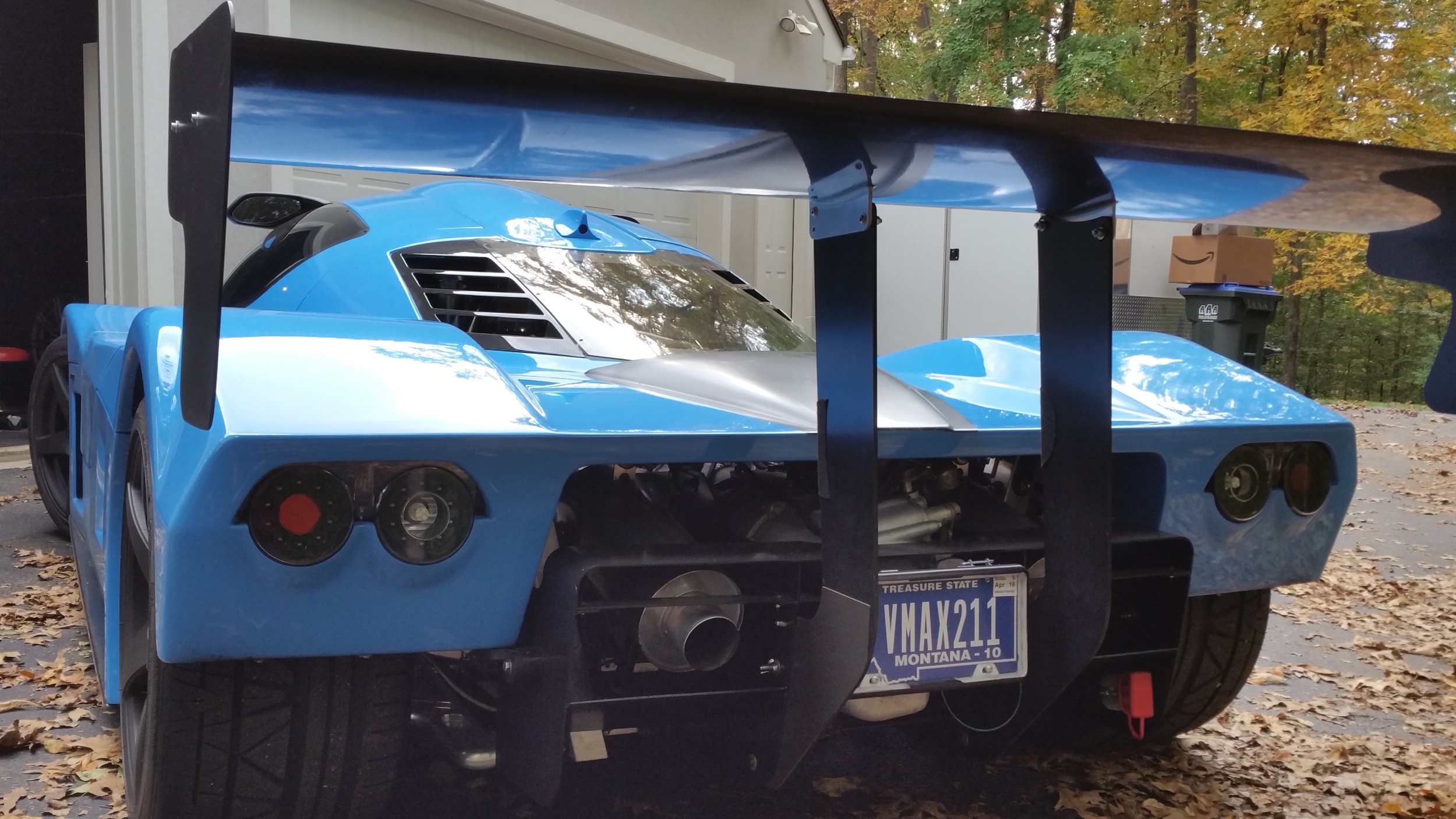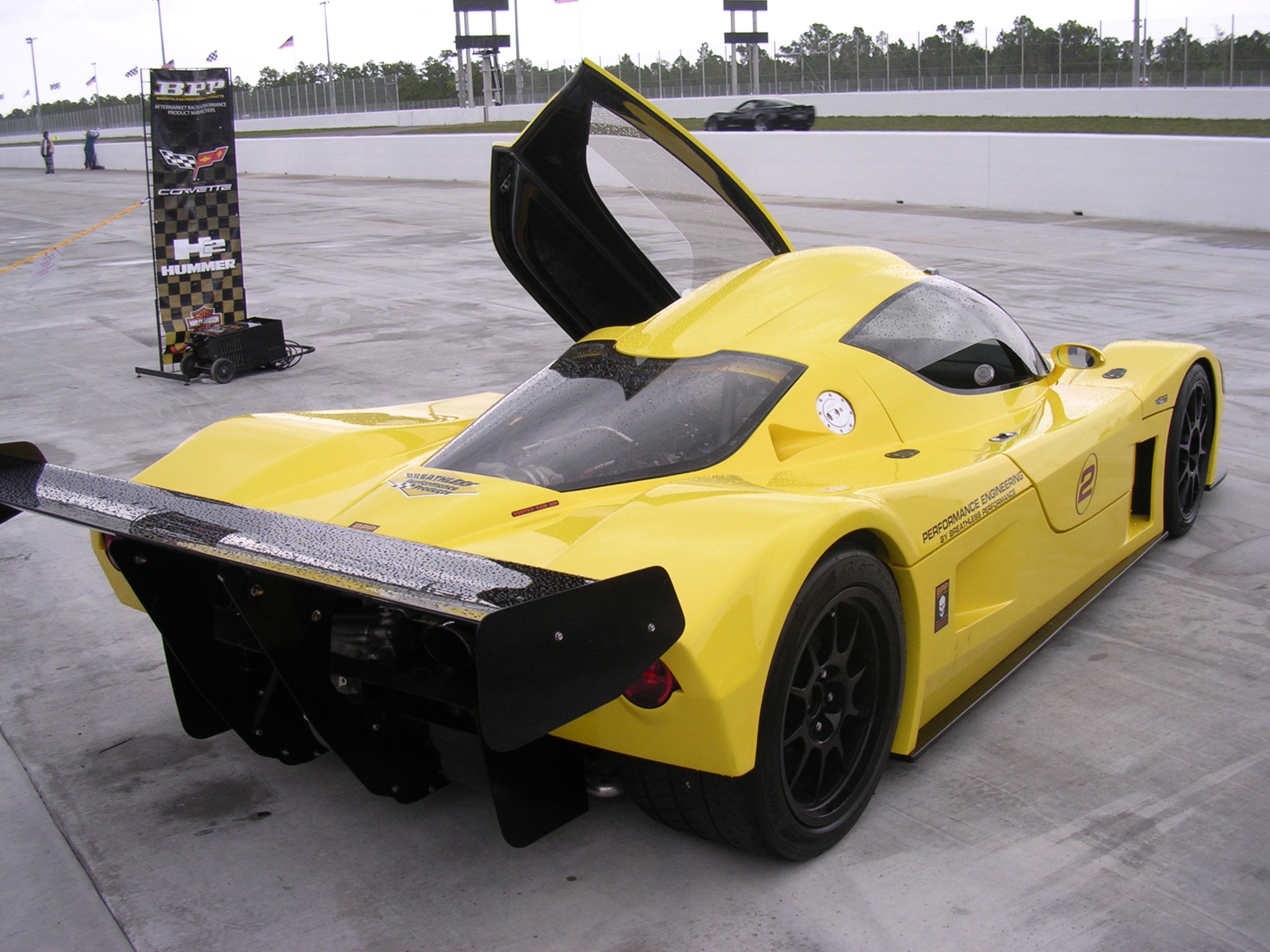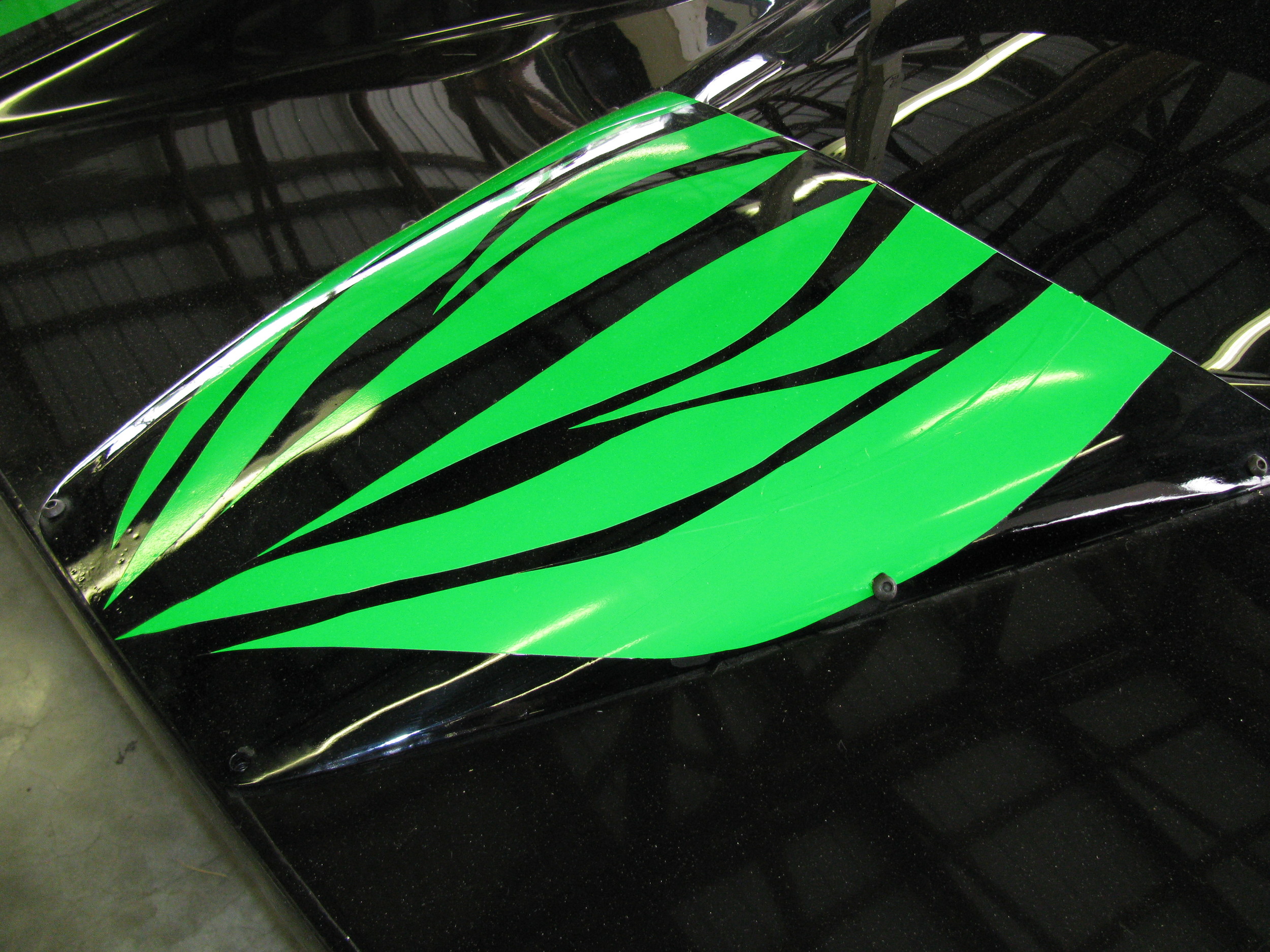Overview
The SL-C body is manufactured from fiberglass, with some panels reinforced with kevlar fabric. There is no production option for a carbon fiber body, largely as a result of the design of the molds, which are made to construct bodies using the layup process, a standard in the industry. Carbon fiber bodies tend to be made using prepreg, in a different kind of mold, as well as typically needing access to an autoclave to bake the body and activate the resin, so making a CF body for the SL-C would require new molds, a very expensive proposition.
The production bodies have a "class A" finish, which means that it is generally free of imperfections, and can be sanded (to remove mold lines) and buffed (for a deeper shine) instead of paint.
The "no paint" option is best for a track or race car; most street cars will need the better finish obtained through the body and paint process. If you plan to just buff and polish the gelcoat, please tell the factory at order time.
Body Styles
There are the following three body styles to choose from:
| Race Tail | Street Tail | Lemans | |
| Max Height | 43" | 43" | unlimited |
| Length of Car | |||
| Pros | Classic GTP looks, with exposed tires in the rear give a race-inspired look. | Enclosed rear makes licensing easier in some jurisdictions as open rear tires are prohibited in some places (this is more of a problem outside of the US).. | Same as street tail. | Designed for operation with a rear wing. | Possible to use a rear wing, but doesn't require one to look good on the street. | Same as street tail. | Tightest space for exhaust system | Most space for an exhaust system, especially a rear exit one. This makes it easier to add mufflers to get a quieter car. | Same as street tail. |
| Cons | May not be acceptable in some jurisdictions due to the exposed tires. | Somewhat more drag, though the included spoiler offers slightly more downforce, even without a wing. | Same as street tail, though the aero effects need to be modeled to get the most from this tail. |
| Doesn't look good to some without a wing, and doesn't look good to some with a wing, so somewhat controversial? | A wing isn't needed for street use, but one can be added. If present, it needs to be mounted higher than the race tail to account for airflow over the spoiler in the rear. |
Paint, Polish, Wrap or Dip?
There are really several alternatives to painting your car. If you just want to get going and start driving now instead of having the car stuck in Paint Prison for 6 months, consider some of the alternatives.
Here's a quick table summarizing the pros and cons of each approach.
| Process | Pro | Con |
| Polished gelcoat | Fast and easy, you can knock down the seams and polish the entire body in a day, if you work hard. | Not a concours level solution, but definitely a 5 or 10 footer. Many people, when first looking at a polished gelcoat car believe it's paint. |
| Can leave it as is forever, or decide to do any of the other alternatives later. | Some gelcoat colors will fade in the sun, unless hit with an automotive clearcoat. Gelcoat finishes can be re-buffed a couple of times to restore sun damage if left un-clearcoated. A product called Gel Gloss can help clean and polish the gelcoat to improve appearance and protection. | |
| Least expensive option- just a little sandpaper and time. | Will likely have to do some gelcoat repair first, from body defects and/of damage during the build process. | |
| Limited to gelcoat colors available from Superlite, though custom ones are sometimes available at extra cost and time-to-delivery. | ||
| Wrap | Incredible variety of colors, patterns, etc., from camo to WW2 aircraft nose-art-inspired designs. | Still need to do decent bodywork or prep underneath, as the wraps tend to show defects like pinholes, craters, scratches. |
| Can be removed easily, though some people have had problems with adhesive removal on wraps that have been on cars for long periods. | May be difficult to repair if the wrap gets torn or scratched, depending on the pattern, color and finish (matte, gloss, semi, etc). | |
| Limited life- most wrap applicators will warranty their work for only a couple of years, or exclude things like fading, etc. | Matte colors tend to be maintenance-intensive, just like their painted cousins. | |
| Probably the most expensive alternative, as wraps can range from $1000 to $5000. | ||
| "Dip" | Wide range of colors and textures | Relatively fragile in some areas, as where stones are thrown up, or on objects like wheels which are subjected to lots of heat and abuse from road salt, etc. |
| Typically easy to repair if needed | Still needs to have decent surface prep as some defects won't be hidden, but less prep is needed compared to wraps or paint. | |
| Easy to remove as needed to redo, or change completely. Generally no problems with peeling it off if installed correctly in the first place. | Overall, the least durable of the three options, though repair is usually inexpensive. | |
| Probably the least expensive, from $300 to $1000, depending on materials and size of car. | Difficult or impossible to do patterns like camo or designs, as is common with wraps. |
Here's an interesting article- written by a wrapping company- that explains when to wrap and when to paint from their perspective.
All of these options allow the car to be prepped and painted later, if that becomes desirable.
Body Prep and Paint
Before you pick up that spray gun, read this page to get a head start, and avoid problems.
Windows
The SL-C has a choice of 1 or 2 piece windows. The sub-page below discusses them in detail.
Windows (Includes discussion of side windows, rear window and windshield)
Wheel Tubs
Whether you call them wheel tubs, inner fender liners, or something else, here's a discussion of the optional kit, what they look like, and how to fit them.
Race Tail Scoop
If you have a race tail, the typical way to install a filter is on a long 4" tube coming from the throttle body. That puts the filter right under the end of the bodywork. One way to duct more cold ait to the filter is to install a scoop made for this purpose. One of the very first SL-C builders made up a scoop that mounts on the bodywork and ducts air to a filter under it. Another builder made a mold of this early scoop to make a scoop for his car, and now offers them to any SL-C builder with a race tail.
The scoop can be fiberglassed in, or bolted on the car with user-fabricated tabs.
Jack Molleur sells these scoops in fiberglass for $120, plus shipping. His email address is jmolleur@cfl.rr.com
Here are a few pics of cars with these scoops.




